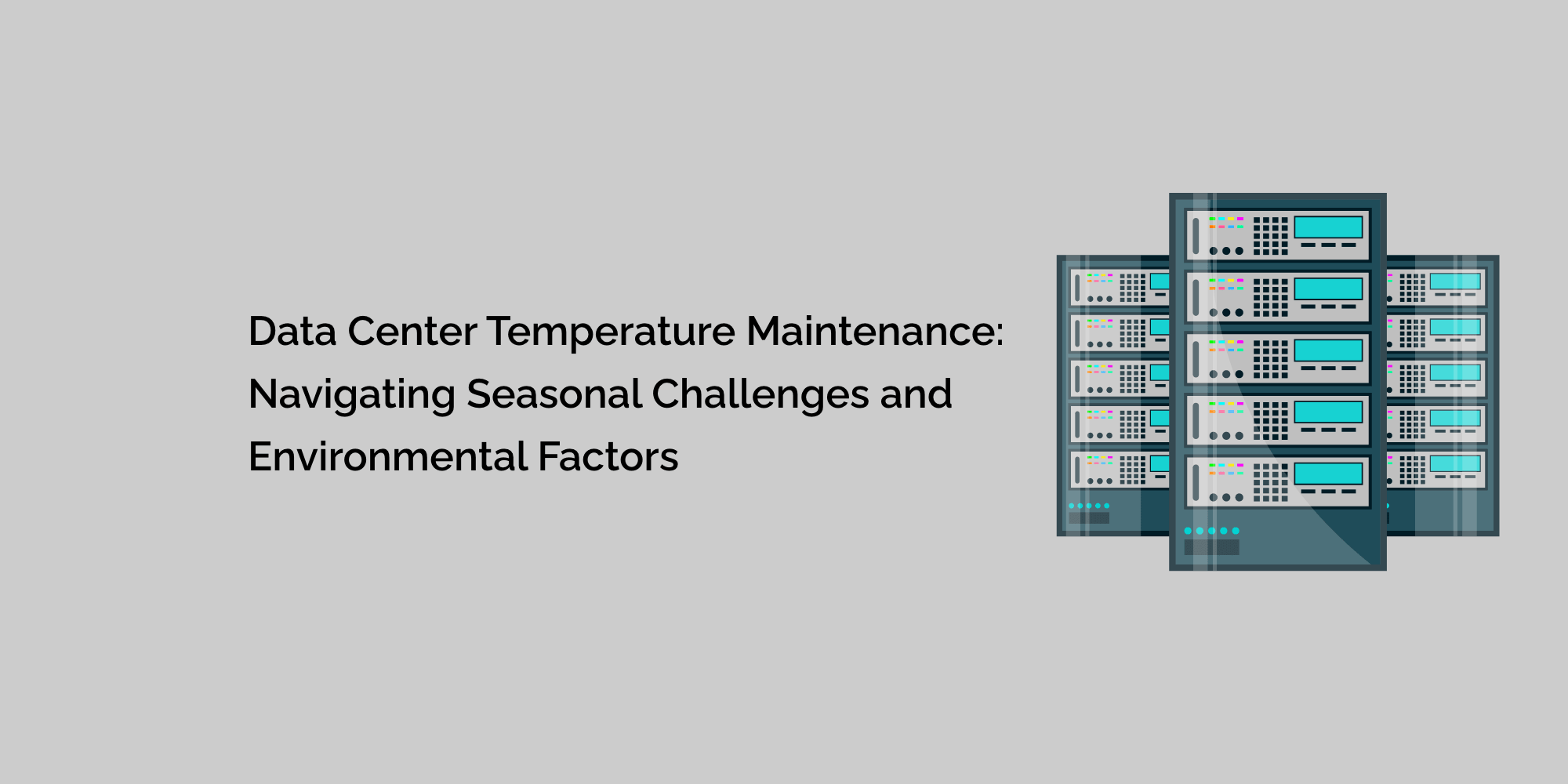Data centers are the backbone of the digital era, supporting a vast range of online services and applications. The efficient and reliable operation of data centers relies heavily on maintaining optimal temperature conditions. Data center equipment generates substantial heat during operation, and any fluctuations in temperature can have severe implications for equipment performance and overall data center efficiency. Navigating seasonal challenges and environmental factors is essential for data center operators to ensure continuous and reliable temperature maintenance. In this blog, we will delve into the importance of temperature maintenance in data centers, the seasonal challenges and environmental factors that impact temperature, and strategies to overcome these challenges.
The Importance of Data Center Temperature Maintenance
Temperature maintenance is a critical aspect of data center management. Data center equipment, such as servers, storage devices, and networking equipment, operates optimally within a specific temperature range. Maintaining the correct temperature helps:
-
Prevent Equipment Failure: Overheating can cause hardware failures, leading to costly replacements and potential data loss.
-
Ensure Data Integrity: Temperature fluctuations can impact data integrity, leading to errors and corruption.
-
Improve Energy Efficiency: Proper temperature maintenance optimizes cooling systems, reducing energy consumption and operational costs.
-
Minimize Downtime Risks: Consistent temperature control minimizes the risk of unplanned downtime due to equipment failures.
-
Prolong Equipment Lifespan: Stable temperatures help prolong the operational lifespan of data center equipment, reducing the need for frequent replacements.
Seasonal Challenges in Data Center Temperature Maintenance
Data center operators face specific challenges in temperature maintenance during different seasons. Let's explore how each season impacts data center temperature:
-
Summer: Summer brings higher ambient temperatures, leading to increased cooling demands in data centers. Cooling systems must work harder to maintain optimal temperatures, resulting in higher energy consumption. Cooling system failures due to overburdened equipment pose significant risks during this season.
-
Winter: In winter, ambient temperatures drop, which may create the misconception that cooling is not necessary. However, data center equipment still generates substantial heat, and inadequate cooling can lead to overheating. Data centers should maintain a balance between cooling and heating to prevent temperature fluctuations.
Environmental Factors Affecting Data Center Temperature
Apart from seasonal challenges, several environmental factors can influence data center temperature, including:
-
Geographic Location: Data centers located in regions with extreme climates, such as deserts or arctic zones, face additional challenges in maintaining stable temperatures.
-
Proximity to Other Buildings: The proximity of other buildings or structures can impact airflow patterns, affecting the efficiency of cooling systems.
-
Nearby Heat Sources: Data centers located near heat-generating sources, such as manufacturing facilities or power plants, may experience higher ambient temperatures.
-
Humidity: High humidity levels can exacerbate cooling challenges, affecting the effectiveness of cooling systems and increasing the risk of equipment corrosion.
-
Solar Radiation: Direct sunlight exposure can lead to localized hotspots within the data center, causing temperature imbalances and potential equipment failures.
Strategies to Navigate Seasonal Challenges and Environmental Factors
-
Implement Comprehensive Temperature Monitoring: Continuous temperature monitoring is crucial for identifying temperature fluctuations and detecting potential cooling issues. Utilize advanced temperature monitoring solutions, including IoT-enabled sensors and AI-driven analytics, to gain real-time insights into temperature conditions.
-
Optimize Cooling Systems: Regularly maintain and optimize cooling systems to ensure they function at peak efficiency. Implement hot aisle/cold aisle containment, ducted aisles, and efficient airflow management to prevent temperature imbalances and reduce cooling energy consumption.
-
Use Energy-Efficient Cooling Solutions: Explore energy-efficient cooling solutions, such as liquid cooling and evaporative cooling systems, to reduce energy consumption and enhance cooling efficiency.
-
Implement Environmental Controls: Consider environmental control measures, such as humidity management and solar shading, to minimize the impact of external factors on data center temperature.
-
Design for Redundancy and Resilience: Implement redundant cooling systems and failover mechanisms to ensure continuous temperature maintenance, even in the event of cooling system failures.
-
Regular Equipment Maintenance: Conduct regular maintenance of data center equipment to ensure optimal performance and prevent potential heat-related failures.
-
Conduct Seasonal Assessments: Perform seasonal assessments to anticipate temperature fluctuations and proactively adjust cooling strategies accordingly.
-
Monitor and Analyze Power Usage Effectiveness (PUE): Monitor and analyze PUE regularly to assess the efficiency of cooling systems and identify areas for improvement.
Conclusion
Data center temperature maintenance is a critical aspect of data center management, impacting equipment performance, energy efficiency, and overall data center reliability. Seasonal challenges, such as summer heat and winter cooling imbalances, as well as environmental factors, can significantly affect data center temperature. To navigate these challenges successfully, data center operators must implement comprehensive temperature monitoring, optimize cooling systems, and explore energy-efficient cooling solutions. Environmental controls, regular equipment maintenance, and redundancy planning are also essential to ensure continuous temperature maintenance and optimal data center performance.
By adopting proactive strategies and leveraging advanced temperature monitoring technologies, data center operators can navigate seasonal challenges and environmental factors effectively, ensuring uninterrupted data center operations and supporting the seamless delivery of online services in the digital era. As the data-driven landscape continues to evolve, data center temperature maintenance remains a foundational element of data center management, contributing to data center efficiency, sustainability, and overall success.








